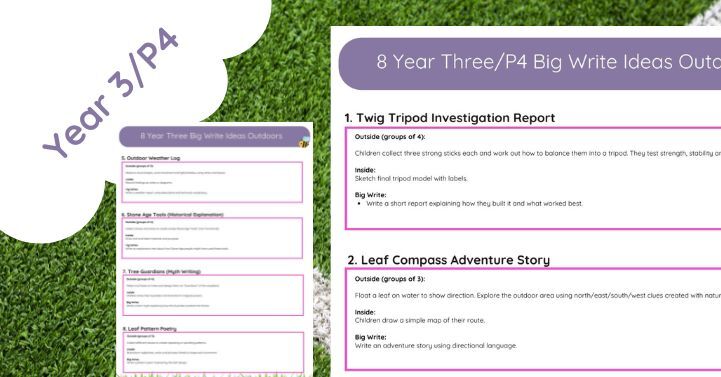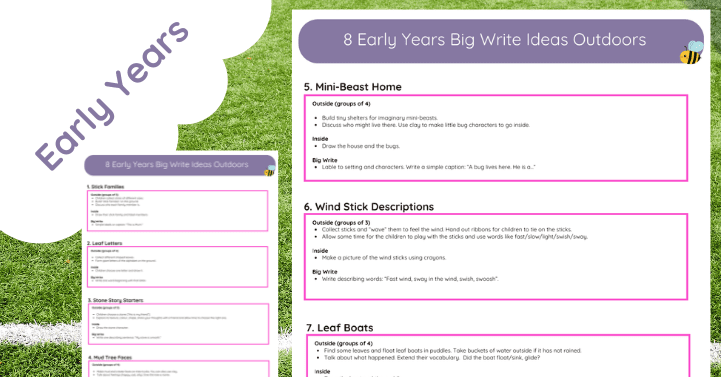Creating letters from natural resources is a highly effective way to introduce literacy to young children, combining sensory play, outdoor learning, and hands-on creativity. Educators and parents can encourage children to explore literacy by making letters from natural materials like leaves, sticks, and stones. In this blog, we’ll explore the benefits of using natural resources in literacy activities in the early years, supported by research and recommendations from child development and education experts.
1. Promotes Sensory Learning and Engagement
Using natural resources to create letters is a sensory-rich activity that helps children engage with learning through touch, sight, and even smell. According to Edutopia, sensory play is crucial for early childhood development as it enhances memory and allows children to connect new information to real experiences (Edutopia). Engaging multiple senses also strengthens children’s ability to retain information and make sense of abstract concepts, like letter shapes, through hands-on interaction.
2. Connects Literacy with Nature and Environmental Awareness
Nature-based learning helps children understand and appreciate the world around them. By collecting materials such as rocks, leaves, and twigs to form letters, children develop a natural connection to their environment, which positively affects their mental and physical health (National Wildlife Federation). The National Wildlife Federation emphasizes that nature experiences encourage a love of the environment and promote sustainability awareness from an early age, laying the foundation for environmentally-conscious individuals.
3. Enhances Fine Motor Skills and Hand-Eye Coordination
Building letters from small items like stones and twigs improves children’s fine motor skills and hand-eye coordination, essential for writing, drawing, and manipulating objects. The Centers for Disease Control and Prevention (CDC) highlights the importance of fine motor skills in childhood development, noting that these skills are critical for later academic tasks and overall cognitive growth (CDC). Letter-making activities encourage children to grasp, pinch, and arrange items carefully, strengthening the muscles needed for future writing skills.
4. Encourages Creativity and Imagination
Allowing children to create letters with natural resources fosters creativity by showing them that learning can be fluid, imaginative, and enjoyable. Instead of seeing letters as fixed shapes, they learn that letters can take many forms. Scholastic notes that creative play in early childhood is essential for developing problem-solving skills and innovation, which are fundamental for lifelong learning and success (Scholastic). This activity allows children to explore, experiment, and express themselves in unique ways.
5. Supports Outdoor Play and Physical Health
Getting children outside to collect natural resources for letter-making promotes physical health and encourages an active lifestyle. Research from Harvard University suggests that outdoor play is essential for children’s health and development, contributing to better sleep, stronger immune systems, and enhanced mental well-being (Harvard University). This hands-on activity combines literacy with outdoor exploration, allowing children to develop physical and cognitive skills simultaneously enjoyably and engagingly.
6. Promotes Social Interaction and Teamwork
Letter-making with natural materials is a great group activity that can help children build social skills, such as sharing, taking turns, and collaborating on creative projects. According to PBS Kids, cooperative play is essential for social and emotional development, allowing children to practice communication, empathy, and cooperation in a safe environment (PBS Kids). When working together to gather materials and form letters, children learn to appreciate each other’s ideas, developing important social and emotional skills foundational for their future relationships.
Getting Started with Natural Letter-Making Activities
Start with a simple activity to introduce natural letter-making to your early years classroom or home. Take children outside to collect materials, and then guide them in arranging the items to form letters. Encourage experimentation and creativity, allowing children to connect deeper to the learning process. This natural approach to early literacy helps develop a love for learning, strengthens motor and cognitive skills, and nurtures a sense of environmental stewardship.
Using natural resources to form letters provides a fun, multisensory, and impactful way to teach literacy. This nature-based approach to learning helps children connect literacy and the world around them, fostering a holistic understanding of language and the environment.
By integrating these practices, educators and parents can create meaningful and memorable learning experiences that support a child’s development in every way.
Phase Two Phonics Nature Posters
EYFS&KS1: Autumn Outdoor Continuous Provision












